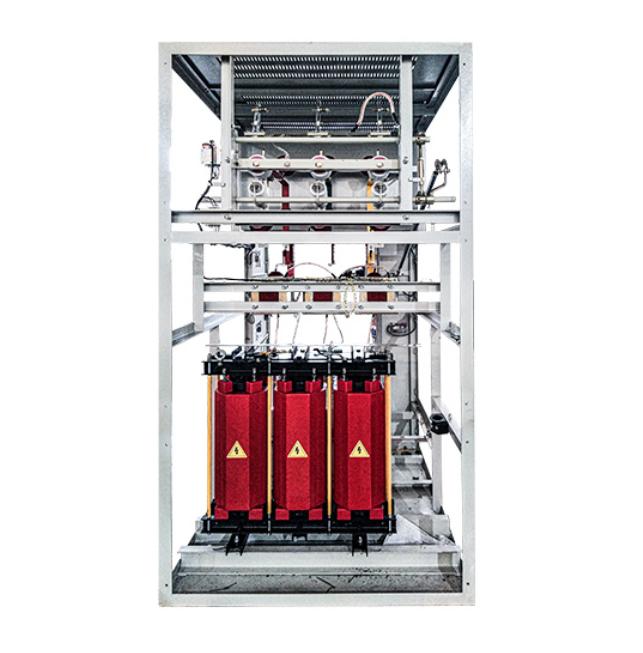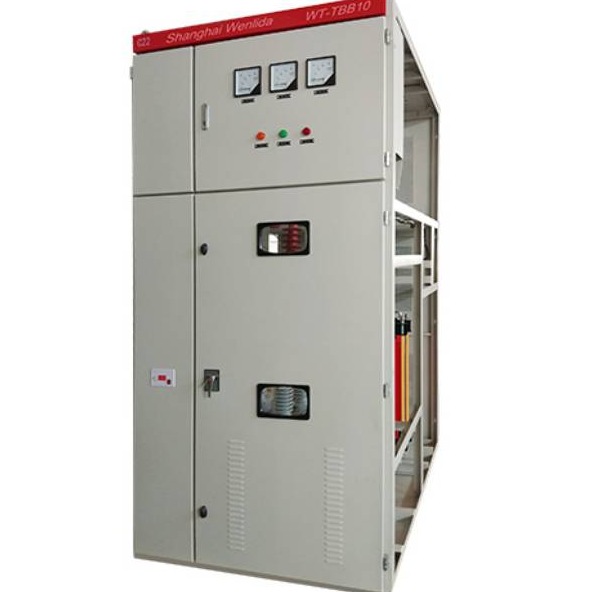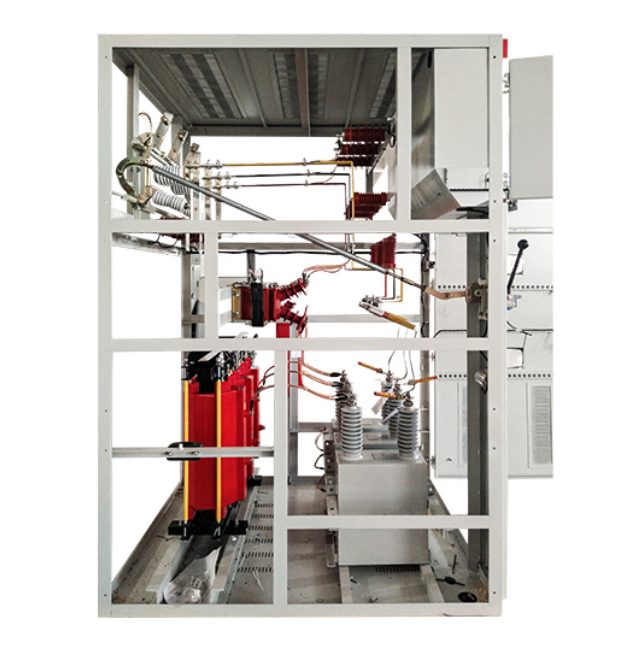Why Reactive Power Compensation Capacitor Cabinet is Crucial for Modern Power System
In today’s evolving and interconnected energy environment power grids encounter obstacles in preserving operational effectiveness and grid stability. Among these challenges is reactive power. Vital, for upholding voltage levels and facilitating the operation of systems even though it doesn’t directly add to productive output. Mismanagement of power can result in inefficiencies, voltage irregularities, and ultimately equipment breakdown. The shunt capacitor bank plays a role, in fixing power factor disparities and enhancing system efficiency by minimizing energy wastage in the energy industry’s dynamic landscape.

Digging into the Concept of Reactive Power Compensation
Reactive power is essentially the energy that moves back and forth between the power source and the load without being used up or consumed completely. It plays a role, in generating fields in devices, like motors and transformers but doesn’t contribute to any useful work; hence it’s commonly known as “unused” energy. Having a power factor due, to an excess of power can lead to various problems in power distribution systems such, as increased energy wastage and ineffective use of capacity which may result in system failures.
In dealing with these obstacles a Reactive Power Compensation Capacitor Cabinet containing capacitors for compensating power is utilized. These gadgets assist in easing the strain, on the power network by providing the reactive power at the load location. This action does not steadies voltage levels. Also boosts the dependability and effectiveness of the entire system thus promoting a more equal and effective energy dispersal.
The Growing Market Demand for Reactive Power Compensation Capacitor Cabinet
Surge in Demand for Power Quality Solutions
The global market for power quality solutions, particularly those related to reactive power compensation, has seen significant growth in recent years. According to a report by MarketsandMarkets, the reactive power compensation market reached a value of USD 2.9 billion in 2023 and is expected to grow at a robust Compound Annual Growth Rate (CAGR) of 8.1% from 2023 to 2030. This surge in demand is primarily driven by industrialization, the increased integration of renewable energy sources, and the expanding usage of electric vehicles—all of which necessitate efficient, stable, and resilient power systems.

As industries and infrastructure evolve to incorporate smart grids, microgrids, and renewable energy technologies, the demand for effective reactive power compensation will only continue to grow. These devices are pivotal in stabilizing power systems, improving energy efficiency, and reducing the operational risks associated with modern energy networks.
Key Drivers Behind the Expansion of the Capacitor Cabinet Market
In recent years, there has been a considerable push towards integrating renewable energy sources, such as wind and solar power, into national and regional power grids. While these energy sources are clean and sustainable, their intermittent nature can lead to voltage fluctuations and power quality challenges, especially during periods of peak demand. This phenomenon has increased the need for reactive power compensation devices, particularly in regions with large-scale wind farms or high rates of electric vehicle adoption.
Wind energy, electric vehicles (EVs), and microgrids represent some of the most critical sectors in which Reactive Power Compensation Capacitor Cabinet is playing an essential role. These devices help improve power quality, maintain voltage stability, and enable smooth integration of renewable energy sources and EV charging stations into the grid, ensuring grid reliability and the seamless operation of modern power systems.
Advantages of Reactive Power Compensation Capacitor Cabinets
Robustness and Reliability
Among the key benefits of modern reactive power compensation systems is their robustness and reliability. For example, the WT-TBB series from Shanghai Wenlida Technology Co., Ltd. leverages contactors’ static switching technology, a proven and dependable solution that has been used in industrial applications for decades. This time-tested technology ensures stable operation and low maintenance requirements, making it an attractive option for power systems that demand long-term reliability and minimal downtime.
The durability of these devices makes them an essential component of any power system that needs to handle varying loads and fluctuations in reactive power, providing a cost-effective solution to industrial users and utilities alike.
Cost-Effectiveness and Enhanced Performance
The WT-TBB Reactive Power Compensation Capacitor Cabinet is particularly well-suited to systems with moderate fluctuations in reactive power demand. The cost-to-performance ratio of these cabinets is exceptionally favorable, offering an affordable and highly effective solution for power factor correction while ensuring the efficiency of energy consumption. For businesses and utilities looking to optimize their power infrastructure, the WT-TBB series offers reliable, economical, and high-performance reactive power compensation, all while helping to avoid penalties associated with poor power factor ratings.
By providing the necessary reactive power compensation, these systems enhance the overall power factor, resulting in lower energy losses and improved system efficiency. This contributes to significant savings on energy costs and reduces the operational impact of system inefficiencies.
Simplified Maintenance and Operation
Another notable feature of the WT-TBB series is its modular design, which simplifies both maintenance and operation. The system is made up of just a few key components, which means that it can be easily disassembled for inspection and maintenance. Should any malfunction occur, the design allows for quick diagnosis and repair, minimizing any system downtime.

Furthermore, this easy-to-maintain design enhances operational efficiency by allowing on-site inspection and reducing the need for specialized maintenance teams. By ensuring maximum uptime, these devices also extend the lifespan of the equipment, making them a long-term investment for power system operators.
Enhancing Line Voltage Stability
Another critical role that reactive power compensation devices play is in the enhancement of line voltage. When reactive power is appropriately compensated for, it helps to stabilize the system’s voltage, potentially increasing it and preventing fluctuations or voltage drops. This not only improves the overall voltage stability across the grid but also ensures that sensitive equipment, such as precision milling machines and high-tech industrial machinery, operates within safe and optimal voltage levels.
The WT-TBB capacitor cabinets play a significant role in stabilizing voltage, reducing issues like voltage sag or surge, which could otherwise damage costly equipment and compromise system performance.
Applications of High Voltage Reactive Power Compensation
Wind Farms and Renewable Energy Integration
As the world transitions to renewable energy, technologies like wind farms play a crucial role in this transformation. However, integrating renewable sources into existing grids is not without challenges, including voltage fluctuations. Wind farms, in particular, can induce significant variations in voltage due to their intermittent energy production. Reactive power compensation cabinets, like those used in high-voltage applications, help mitigate these fluctuations by stabilizing voltage levels and improving the overall power quality, making it easier to integrate renewable energy into the grid.
In areas with significant wind farm presence, shunt capacitor banks have become an essential technology for maintaining grid stability and ensuring that power generated from renewable sources is effectively absorbed and distributed.
Electric Vehicles and Grid Stability
As the adoption of electric vehicles (EVs) continues to accelerate, particularly in urban regions, the increased load placed on the power grid has raised concerns about voltage stability and power quality. EV charging stations can cause substantial voltage drops and lead to power quality issues, especially during periods of high charging demand.
By installing reactive power compensation devices, such as capacitor cabinets, utilities can optimize voltage levels, ensuring the grid can handle the growing load demand from EVs without compromising stability or power quality.
Microgrids and Smart Grids
The rise of microgrids and smart grids is another factor driving the demand for reactive power compensation solutions. Microgrids are localized energy systems capable of operating independently from the main grid, while smart grids leverage advanced communication and control technologies to optimize grid performance.
For both microgrids and smart grids, maintaining voltage stability and ensuring efficient system operation is critical. Reactive power compensation plays a pivotal role in providing the power factor correction necessary to ensure the efficient, stable, and reliable functioning of these advanced systems.
Conclusion: The Future of Reactive Power Compensation
As we continue to move toward a more sustainable, electrified future, the role of technologies like the reactive power compensation capacitor cabinet will only become more crucial. With the increasing integration of renewable energy, the proliferation of electric vehicles, and the advent of smart grids, the need for effective power factor correction and voltage stability will rise significantly.
The WT-TBB reactive power compensation cabinets, such as those provided by Shanghai Wenlida Technology Co., Ltd., represent a reliable, cost-effective solution for modern power systems that need to adapt to a rapidly changing energy landscape. With the global market for these devices expected to expand significantly in the coming years, it is clear that reactive power compensation will remain an essential investment for utilities, industries, and infrastructure projects worldwide.
